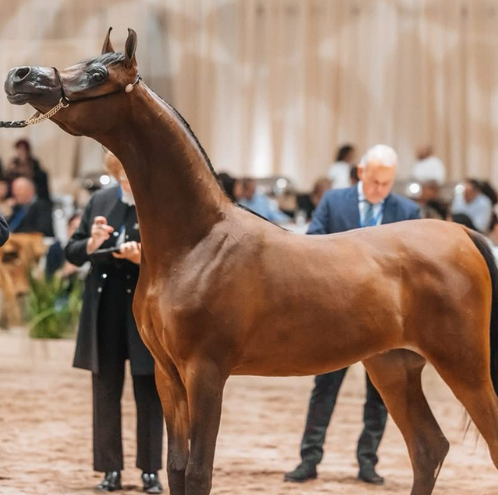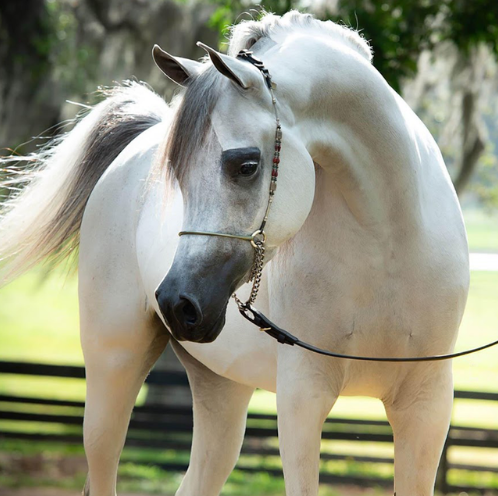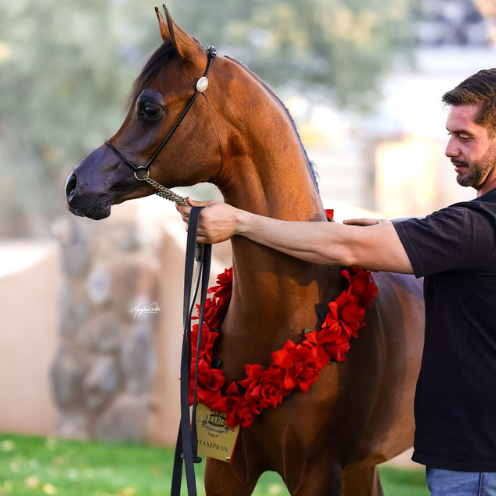The Complete Arabian Horse Guide: History, Bloodlines, Care & Ownership
The Arabian horse stands as one of the oldest, purest, and most influential breeds in the world. Renowned for its beauty, intelligence, stamina, and deep connection to humankind, the Arabian has shaped nearly every modern light horse breed in existence. Whether admired for its refined head and arched neck, celebrated in show rings, or treasured as a loyal companion, the Arabian horse continues to embody a timeless blend of grace, strength, and spirit.
This guide provides a complete overview of the Arabian horse – including its origins, physical traits, bloodlines, temperament, care, training, pricing, and what prospective owners should know before acquiring one.
What Makes the Arabian Horse Unique
The Arabian is instantly recognizable, even to those with limited horse knowledge. Its silhouette alone tells a story: a dished face, large expressive eyes, small muzzle, high tail carriage, and compact yet athletic frame.
Arabians are celebrated not only for beauty, but also for endurance, intelligence, and a remarkable willingness to bond with humans. For centuries, they have been companions in war, travel, sport, and family life — a horse bred not just for performance, but for partnership.
Key Breed Characteristics
• Distinctive dished face and refined head
• Large, wide-set eyes with deep sockets
• Short back with strong, broad loin
• High-set tail and sculpted croup
• Naturally elevated, elegant movement
• Dense bone without heaviness
• Strong hooves and efficient stride
• Exceptional endurance and lung capacity
Arabians are also known for their “people-oriented” nature. More than most breeds, they form lasting bonds with their handlers and are highly responsive to voice, body language, and emotional energy.
Origin & History of the Arabian Horse
The Arabian horse traces its roots back thousands of years to the deserts of the Arabian Peninsula. Bred by nomadic Bedouin tribes, the Arabian was far more than a means of transportation—it was a war mount, a symbol of honor, and often a member of the family, living inside tents for protection.
A Horse Shaped by the Desert
• Bred to survive extreme heat and scarce water
• Developed powerful lungs and efficient metabolism
• Needed to be loyal, intelligent, and calm enough to live among people
As traders, explorers, and armies traveled, so did the Arabian. It became a prized gift among kings and sultans, was used to refine European cavalry horses, and later played a foundational role in the development of several major modern breeds.
By the 1800s and 1900s, global breeding programs preserved distinct types of Arabian bloodlines, each influenced by geography, purpose, and philosophy of selection.
Today, the Arabian remains the world’s most historically documented horse.
Breed Characteristics & Physical Traits
Arabians are classified as a “hot-blooded” breed — alert, energetic, sensitive, and intelligent. Unlike other hot-bloods, however, Arabians are also known for loyalty and an unusually people-focused temperament.
Physical Traits Common to Arabians
• Height: typically 14.1 to 15.2 hands
• Weight: 800 to 1,000 lbs
• Coat colors: grey, bay, chestnut, black, and roan
• Naturally black skin, even under white hair
• Distinct skeletal structure: 17 ribs instead of 18, 5 lumbar vertebrae instead of 6
The short back, powerful hindquarters, and deep chest give the Arabian its famous athletic ability. Combined with efficient movement and exceptional lung capacity, the breed excels in distance and versatility.
Arabian Horse Bloodlines & Types
Although all purebred Arabians trace back to desert ancestry, several distinct bloodline groups have evolved. These lines often differ in type, movement, head shape, and show or performance suitability.
Major Bloodline Groups
• Straight Egyptian – prized for classic type, refined heads, and strong pedigrees
• Polish – balanced, athletic, often powerful with strong bone
• Russian – larger frames, athletic movement, popular in sport disciplines
• Crabbet (English) – strong, solid-bodied, excellent riding horses
• Domestic American – blended lines, often bred for halter or performance
• Straight Desert (Bedouin type) – closest to original native horses
Each breeder values different traits — some prioritize extreme refinement, others prefer athletic strength, others seek versatility or family suitability.
Temperament, Intelligence & Trainability
Arabians are widely regarded as one of the most intelligent horse breeds. Their alertness and sensitivity make them fast learners, but also require clear, respectful handling.
Unlike some breeds that tolerate rough training, Arabians respond best to communication, trust, and consistency. Their intelligence means they remember both praise and mistreatment.
Common Temperament Traits
• Highly aware of surroundings
• Curious, communicative, quick to learn
• Deep bond with one handler once trust is formed
• Sensitive to emotional tone and voice
• Bold, but rarely aggressive by nature
This combination makes Arabians excellent for riders who want partnership, not domination.
Care, Feeding & Daily Management
Because Arabians were bred to survive in harsh desert conditions, they are naturally efficient metabolizers. They typically require less feed than larger breeds and remain in good condition on balanced hay and grain programs.
Care Guidelines
• Provide regular turnout and mental stimulation
• Maintain dental care and farrier schedule every 6–8 weeks
• Feed high-quality forage, moderate grain, balanced minerals
• Allow social interaction with other horses when possible
• Avoid over-supplementation — Arabians thrive on simplicity
Arabians are generally healthy and long-lived, with many remaining active well into their late 20s or early 30s.
Training & Performance Disciplines
Arabians are versatile and adaptable across a wide range of disciplines. Their natural agility and willingness to work make them suitable for both English and Western riding.
Popular Activities for Arabian Horses
• Endurance riding (world record breed for distance)
• Halter and in-hand showing
• Dressage
• Hunter pleasure
• Western pleasure
• Sport horse in-hand and under saddle
• Competitive trail
• Mounted games and youth programs
• Family riding and recreational riding
While some horses are bred specifically for halter or high-action show rings, many Arabians are excellent all-around mounts suitable for amateurs and families.
How Much Does an Arabian Horse Cost?
Prices vary widely based on bloodline, age, training, show record, and purpose. A well-bred Arabian foal may begin in the low four figures, while elite show or breeding horses may reach six figures or beyond.
General Price Ranges
• Pleasure or family companion: $3,000 – $7,500
• Quality young horse with pedigree: $8,000 – $15,000
• Trained riding horse with show potential: $10,000 – $25,000
• Proven show or breeding horse: $30,000 – $100,000+
Ongoing ownership expenses — feed, boarding, vet care, farrier, tack, transport — should always be factored into long-term planning.
Buying an Arabian Horse – What to Look For
When evaluating an Arabian, consider not only appearance, but structure, movement, and temperament. A refined head alone does not guarantee a good riding partner or breeding prospect.
Checklist for Buyers
• Correct conformation and soundness
• Balanced movement and willingness under saddle
• Pedigree suited to your goals (show, bloodline, sport, etc.)
• Solid handling and manners on the ground
• Clear vet records and registration paperwork
A reputable breeder or seller will welcome questions, encourage visits, and provide full transparency.
Contact Us for Inquiries or to Schedule a Visit
If you are considering owning an Arabian, take your time, observe different types, and learn what qualities matter most to you. Whether you seek a future show prospect, a foundation mare, or a lifelong companion, the right Arabian is one that fits not only your goals, but your heart.
Whether you are searching for a future show prospect, a foundation mare, or a lifelong companion, we are happy to answer questions, share pedigree details, or help guide you toward the right Arabian horse.
Phone: (630) 215-5545
Email: alameerastable@gmail.com
Location: 24224 S 88th Ave, Frankfort, IL 60423
Visiting Hours: By appointment only
INTERNATIONAL INQUIRIES WELCOME
Frequently Asked Questions About Arabian Horses
Q: Are Arabian horses good for beginners?
Many Arabians are excellent for beginners when properly trained and matched to the right rider. They are intelligent, people-oriented, and responsive, but require confident, calm handling rather than force.
Q: What is the average lifespan of an Arabian horse?
Arabians are one of the longest-living horse breeds, with many remaining active into their late 20s or even 30s.
Q: Why do Arabian horses have a dished face?
The concave profile is a genetic trait passed from desert ancestors. It is believed to improve airflow and cooling, useful for endurance and extreme heat.
Q: What is the difference between Egyptian and Polish Arabians?
Egyptian lines are known for extreme refinement and classic type, while Polish lines are valued for athletic ability, strong bone, and balanced structure.
Q: How much exercise do Arabians need?
Because they are naturally energetic, Arabians benefit from regular turnout, riding, or training several times per week. They do not thrive in long-term stall confinement.
Q: Can Arabian horses compete in modern sport disciplines?
Yes. Arabians excel in endurance, sport horse classes, dressage, and more. Their agility and heart make them highly competitive, especially in youth and amateur divisions.
Explore More Arabian Horse Guides
Arabian Horse Guide (Main Page)
History of the Arabian Horse
Arabian Horse Bloodlines & Types
Arabian Horse Temperament & Intelligence
Arabian Horse Care & Feeding Guide
Arabian Horse Training & Performance Disciplines
Arabian Horse Breeding & Bloodlines Overview
Arabian Horse Conformation & Anatomy
Arabian Horse Prices & Buying Guide
Arabian Horse Registration & Pedigree Papers Explained
Arabian Horse Endurance & Athletic Ability




